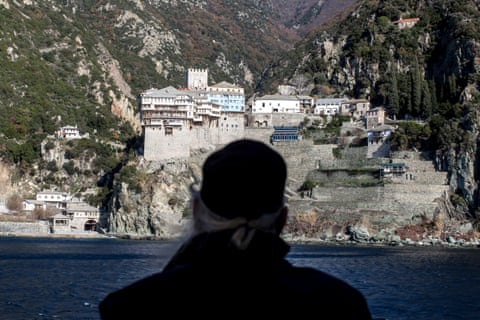Mount Athos is one of the most important centres of the Orthodox Christian world, consisting of 20 monasteries and approximately 2,000 monks. Located on a Greek peninsula, it is home to the oldest surviving monastic community on Earth. The way of life for the monks is practically unchanged since the first monks arrived in the ninth century. Most of the monks live within the walls of their chosen monastery, but others choose to live in complete isolation, away from any distractions.
Women are not allowed within 500 metres of the shore, and even female animals are prohibited from walking on Mount Athos. This is because the Virgin Mary is said to have visited the peninsula and prayed to have it as her own. It is believed that the presence of women might distract the monks, tempting them away from true celibacy and lead them to sin.

Monastic life
For the majority of monks on the holy mountain who live inside one of the 20 monasteries, prayer takes up most of the time. Even when they are hard at work or eating in the refectory, they are in prayer. Services take place in the monasteries’ often exquisitely ornate churches.
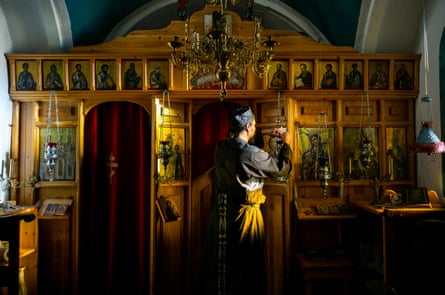
- Father Iusif lights candles inside the church that he built. Right: A monk prays at a window during the day in the church of Pantokratoros

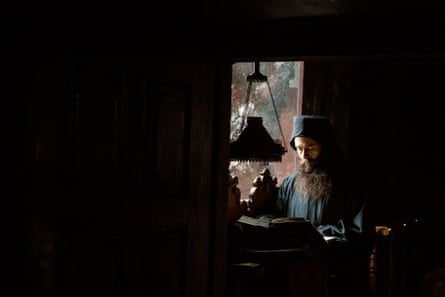
The timings of the services vary and can sometimes run for six hours. Most prayer takes place at night, with one of the services starting at 2am and finishing at 6am – this is because the monks believe prayer is easier when the monastery is at its quietest.
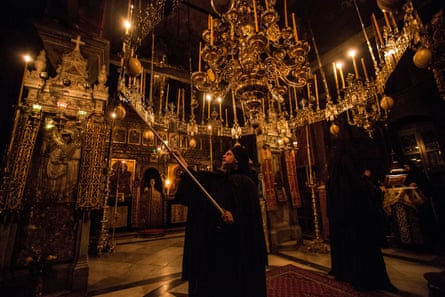
- A monk lights candles during a midnight vigil. Monks usually pray in the early hours of the morning as they believe this is when they are closer to God and their prayers can be heard.
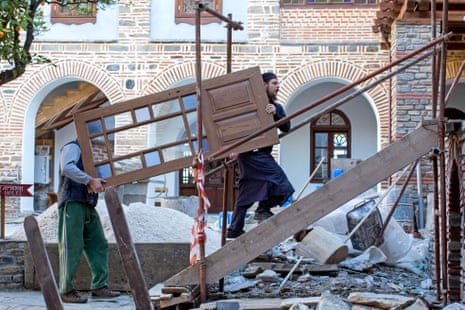
Work
It is a common misconception that monks do nothing but sit and pray all day. In fact they spend a lot of the day working on the tasks given to them by the abbot. This can include cleaning the guest houses for visitors, making wine, preparing dinner or building and renovating the monastery.
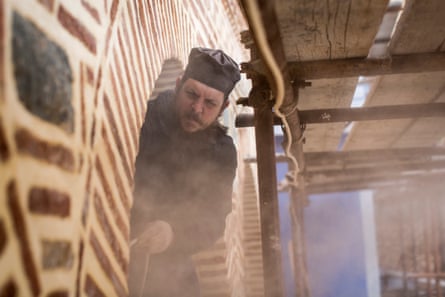

- A monk makes a window frame, and (right) another monk teaches a new arrival about carpentry.
Every effort is used for whatever job a monk is given as they believe it is a job given to them directly by God and are often reciting a prayer while they work.

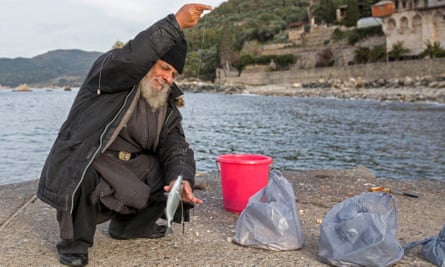
- Father Theophilos drives his car to the capital of Mount Athos, Karyes. Right: A monk fishes outside of Xenophontos monastery.
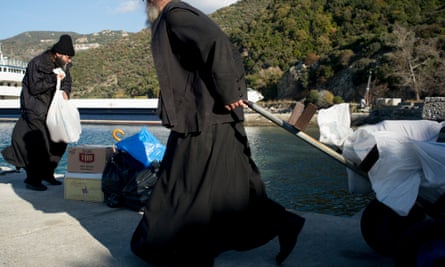
- Monks take deliveries to and from monasteries from the main port of Dafne.
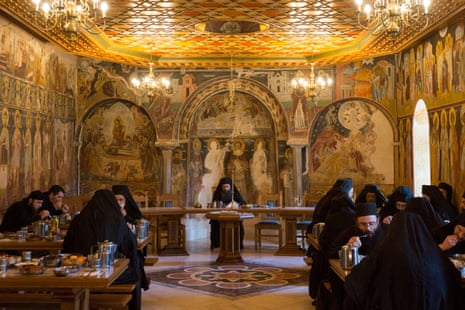
Eating
The monks eat silently, often listening to one of their number reciting a prayer in the refectory of the monastery. Their food is usually rather simple – consisting of mainly vegetables and sometimes fish, and complimented with water and wine.

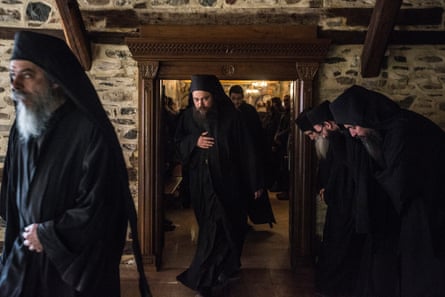
- Left: A monk in deep thought as he eats in silence in the refectory of Pantokratoros. Right: The monks leave the refectory of Pantokratoros after dinner.
Most of the ingredients are commonly grown on the monastery’s farms, and they all have their own vineyard for the supply of the wine.

- Monks sit and talk as they make wine.
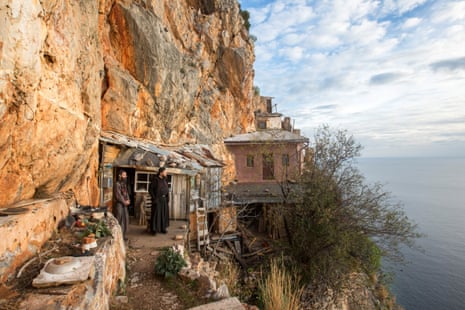
Sketes life
If a monk would rather not live the monastic life, they can live in a skete, a small community which allows relative isolation. The most isolated part of Mount Athos is known as Karoulia, where cells hang precariously on the cliff-edge with crashing waves hundreds of feet below. Monks may choose this life of complete isolation and simplicity to feel closer to God and be far away from any distractions to their prayer.

- Because most of the cells are so inaccessible, supplies such as firewood and food need to be brought over in baskets suspended from ropes.
Not long ago, hermits (the monks that live in the sketes) could only access their cells by hauling themselves up with ropes or chains that passed over makeshift pulleys. In some of the most inaccessible cells, if the hermit ever needed help they would have to raise a flag which would alert their neighbour – and only then would someone visit.
I don’t like monastery life, it is like a prison. Here I am more free
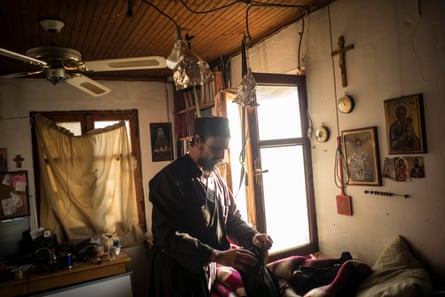
- Father Iusif inside his bedroom at his cell in Karoulia.
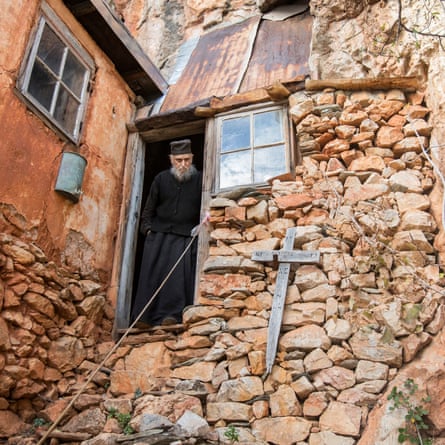

- Left: Father Arsenios by the entrance of his cell. He has not left there for 64 years as he is too frail now to climb the surrounding cliffs. Right: Twinings teabags in the kitchen of Father David.

- Bones belonging to the monk who previously lived in that cell are kept in a silver box. Even after death, the monk remains in the cell.

